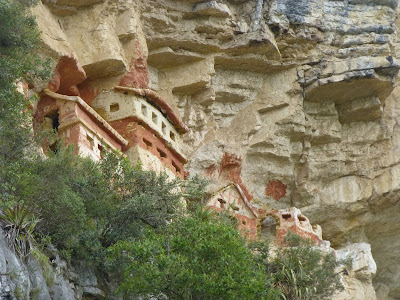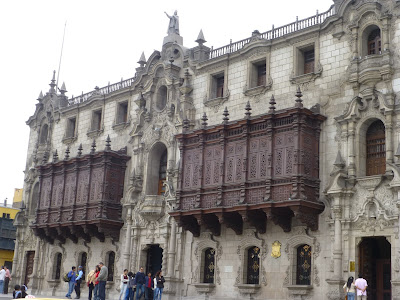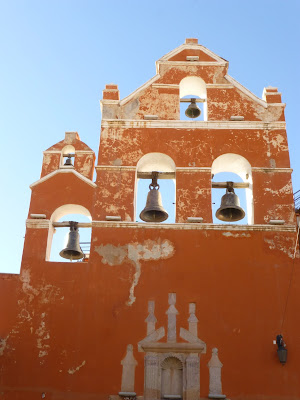We were met at the bus station at 6am by our guide, Jose, and we were lucky enough to be able to check straight into our hotel, have a shower and breakfast, before starting our tour at 8.30. I then felt surprisingly civilised given that I hadn't had any sleep!
The first day of our tour was a trip into the mountains to see some sarcophagi perched high up on cliffs. Very few are left as so many have been destroyed, but these ones are now being protected. One of the Chachapoya ethnic groups buried their dead in mummy bundles in these sarcophagi on high inaccessible mountain cliffs - to protect them for their after life. We couldn't get close - you'd need to absail down the cliffs to do that!
On the way back a quick detour to a breathtaking canyon!
Our guide is a keen bird watcher so we stopped frequently to watch birds - we didn't find toucans or the famous cock of the rocks, but hummingbirds and other multi- coloured birds made up for that. And Gocta falls was well worth the hike - it would be the world's third highest waterfall if it didn't stop and start again part way down, but even the bottom part is on the world's top 20! We thought we'd exhausted all our enthusiasm for waterfalls at Iguazu, but this one had plenty of wow factor too!

We then drove deeper into the countryside up the Utcubamba valley to find the hotel where we would stay for the next two nights. We arrived to find there was no electricity for the first hour or so, soit was showers by candlelight!
The next day we hiked for about four hours to visit the cliffs of Revash where there are a groups of small mausoleums that used to contain mummy bundles - again, most of these have been raided, but the ones in Revash are some of the best preserved.


Then for our last day of the tour and a day trip to Kuelap - the biggest pre-Inca site in South America. It's up on a very remote mountain top, a four-mile hike straight up or a two-hour drive around a winding mountain track. We took the drive, which had the added advantage of a stop to watch some humming birds along the way - including the rare marvellous spatutail. Very difficult birds to photograph asthey move so quickly!
We spent about five hours wandering round Kuelap - it's an enourmous site surrounded by high walls, with hundreds of circular stone buildings and a temple inside. Numerous human remains were found in the walls as well as in and near the temple, and it's not clear exactly what the site was built for and why the Chachapoyas people died out. Mysterious and fascinating, and a good way to end our trip.
It's been a good trip, with amazing natural and man-made wonders along the way. Looking forward to sorting out all the photos and revisiting the highlights!
Adios!
Hazel x


















































